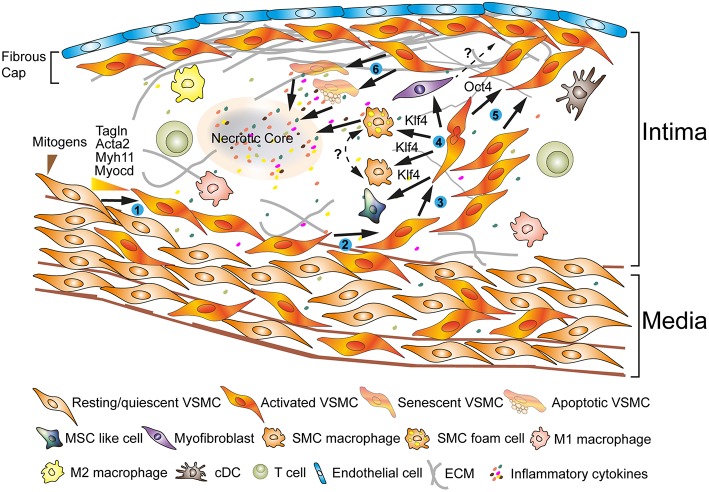Figure 1.
Phenotypes of VSMCs during atherosclerosis progression reveal extraordinary plasticity. ECs and VSMCs in atherosclerotic plaques show activated phenotypes (➊) (3, 4). Some of the VSMCs originate in the media following recruitment into the intima; other VSMCs may be bone marrow-derived or they may originate from myeloid cells in the circulation (➋) (3). A fraction of VSMCs proliferate (➌) (3, 5). VSMCs secrete extracellular matrix components; the pluripotent transcription factor, i.e., Klf4, may play major roles in a process referred to as phenotype switching (➍) (6, 7). In attempts to shield the atherosclerotic plaque from lethal rupture, Oct4 may control a process that has been termed remigration to form a fibrous cap (➎) (4, 8–10). Senescence and apoptosis trigger the generation of additional inflammatory cytokines to form a necrotic core initiating a vicious cycle with lethal clinical consequences during the late stages of the disease (➏) (3, 4, 11).

